Fashion’s Unimaginable Future How Tech Will Redefine What We Wear
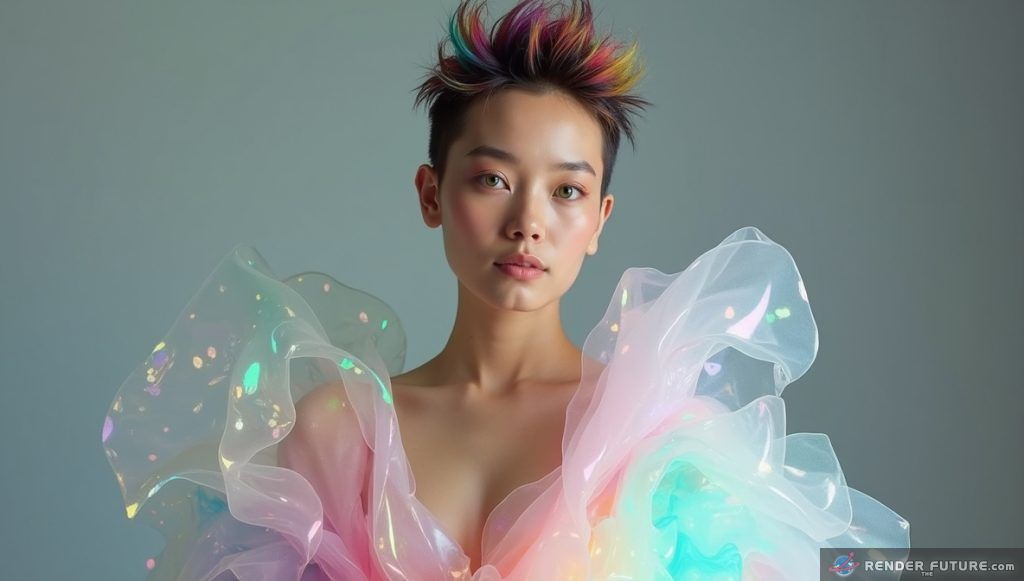 Fashion isn’t just about clothes – it’s about identity, rebellion, and self-expression.
Fashion isn’t just about clothes – it’s about identity, rebellion, and self-expression.
But what if the very fabric of fashion was about to transform beyond recognition? Imagine outfits that adapt to your body in real time, materials that heal themselves, and virtual wardrobes so realistic you can feel digital fabric.
The future of fashion isn’t just changing – it’s undergoing a revolution powered by AI, nanotechnology, and bioengineering.
And it’s arriving faster than you think.
Fashion’s Next Frontier: Where Algorithms Meet Avant-Garde
Let’s be honest – most of us can’t afford a personal couturier. But what if you had an AI that could channel Alexander McQueen’s rebellious spirit, Virgil Abloh’s streetwise genius, and Iris van Herpen’s sci-fi visions—all tailored specifically for your body and personality? That future is closer than you think.
When Your Closet Becomes Smarter Than You
Picture this: It’s 2030, and your morning routine goes like this:
“Alexa, dress me for my 10am investor meeting – make me look powerful but approachable. Oh, and it’s raining.”
Before your coffee finishes brewing, your AI stylist has:
- Analyzed the attendees’ LinkedIn profiles to avoid color clashes with the CEO’s signature red blazer
- Selected a jacket with nano-coated fibers that repel rain while mimicking the drape of Italian wool
- Adjusted the cut to emphasize your shoulders (because your smart mirror knows that’s your best angle)
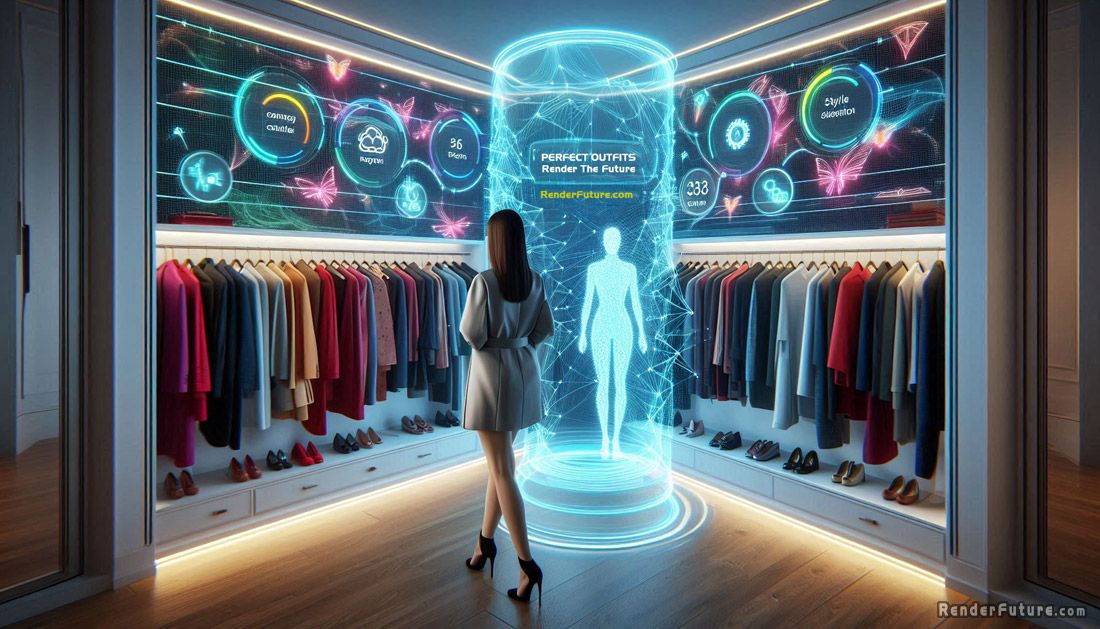 This isn’t science fiction. Companies like Zegna are already experimenting with AI-powered custom tailoring, while Google’s Project Muze proved algorithms can generate surprisingly wearable designs. The scary part? Some of these AI creations are more innovative than what comes out of fashion schools.
This isn’t science fiction. Companies like Zegna are already experimenting with AI-powered custom tailoring, while Google’s Project Muze proved algorithms can generate surprisingly wearable designs. The scary part? Some of these AI creations are more innovative than what comes out of fashion schools.
The Death (And Rebirth) of Trends
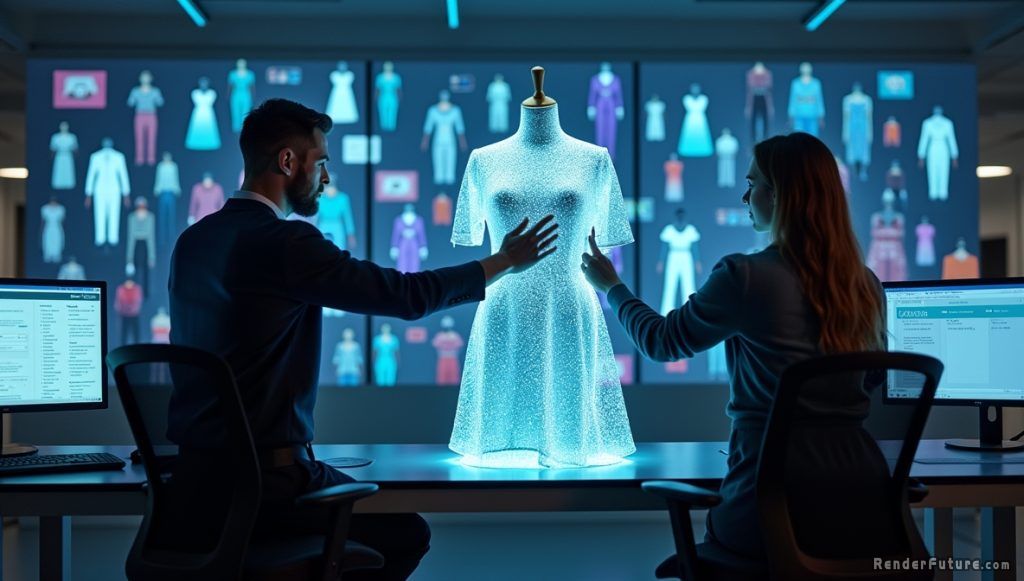 Remember when we all collectively decided skinny jeans were over? In the future, that groupthink will happen at lightspeed – and not because of Vogue editors.
Remember when we all collectively decided skinny jeans were over? In the future, that groupthink will happen at lightspeed – and not because of Vogue editors.
AI trend forecasters like Heuritech are already scraping billions of social media images to detect micro-trends before they explode. Soon, your clothes might update themselves to match:
- Your jacket’s color shifts when your neighborhood’s “aesthetic score” changes
- Your workout leggings generate heat-map patterns showing which exercises are trending in your gym
- Your dress subtly alters its silhouette based on real-time analysis of celebrity street style
But here’s the twist: As algorithms homogenize trends, counterculture will fight back. Expect to see “anti-AI” fashion collectives creating deliberately un-machine-readable designs – perhaps garments that appear distorted on camera or change patterns when scanned by facial recognition.
Wearable Daydreams: When Clothes Defy Physics
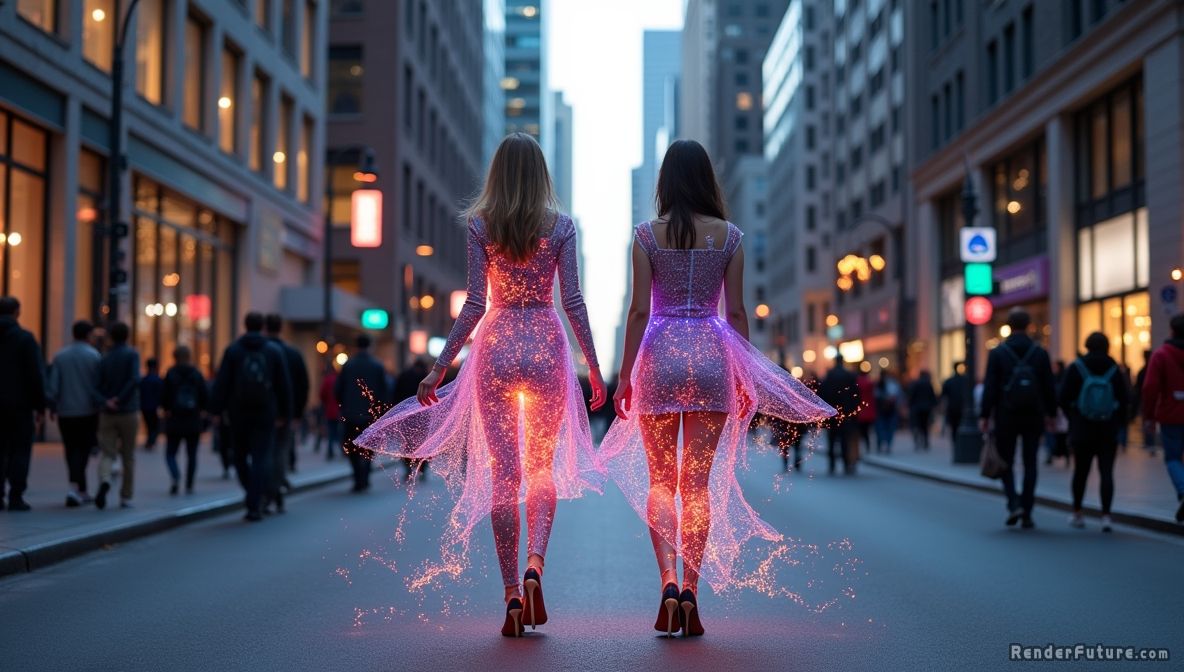 The most exciting developments aren’t just about smarter clothes – but impossible ones. Digital fashion houses like The Fabricant are selling NFT dresses that don’t physically exist, while augmented reality lets you project holographic accessories onto any outfit.
The most exciting developments aren’t just about smarter clothes – but impossible ones. Digital fashion houses like The Fabricant are selling NFT dresses that don’t physically exist, while augmented reality lets you project holographic accessories onto any outfit.
But the real magic happens when these worlds collide:
- Jackets with “emotional membranes” that turn transparent when you’re feeling confident
- Shoes that grow virtual wings when you walk past someone who’s checked your dating profile
- Dresses that “glitch” in sync with your music playlist
Designer Iris van Herpen puts it perfectly: “Fashion is no longer about decorating bodies – it’s about reimagining what a body can be.”
Your Clothes as Living Diary
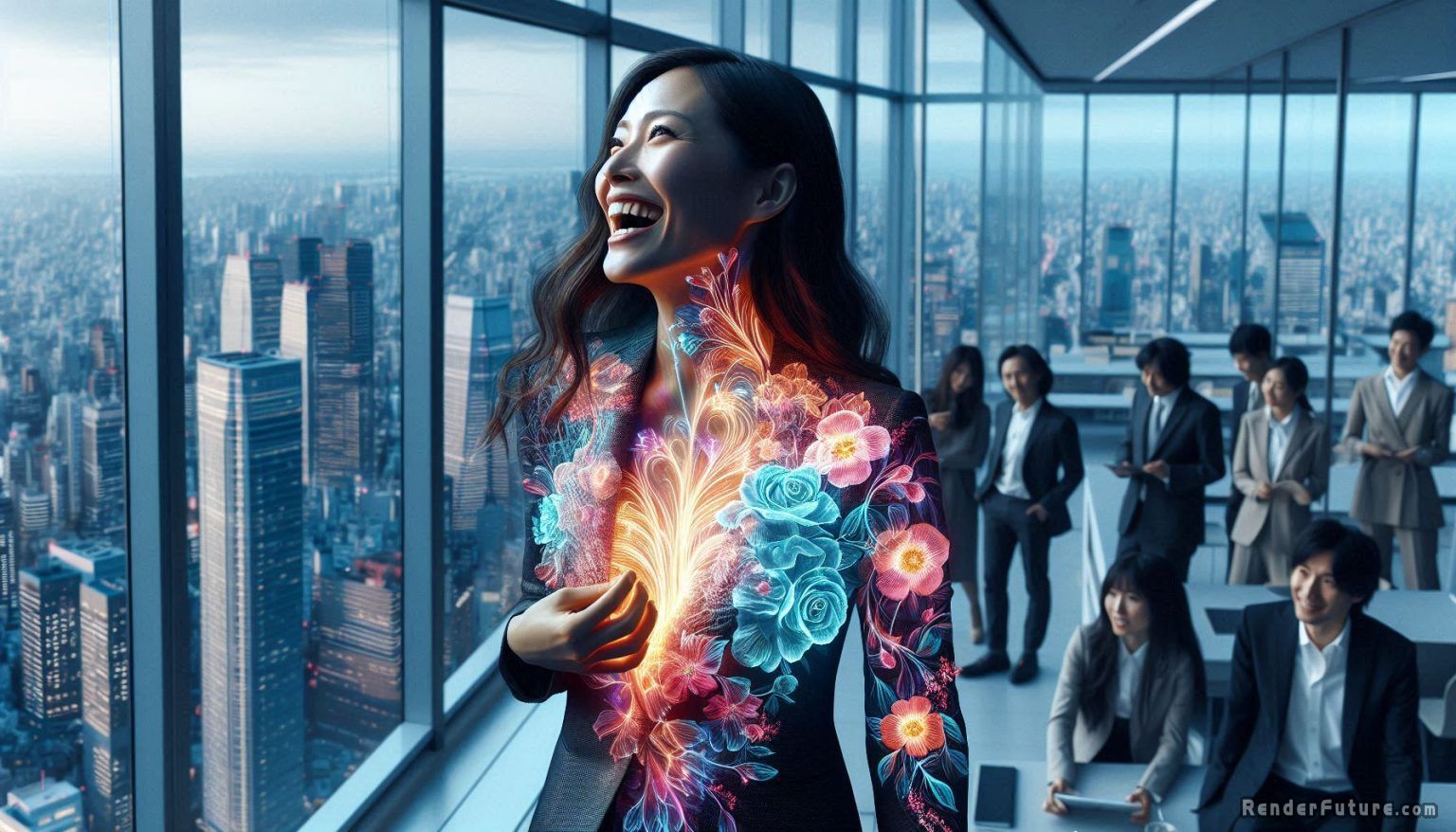 In Tokyo, researchers are developing fabrics that change color based on biochemical signals. Imagine:
In Tokyo, researchers are developing fabrics that change color based on biochemical signals. Imagine:
- A shirt that blooms floral patterns when you’re happy
- A tie that develops “wrinkles” during stressful meetings
- A wedding dress that slowly fades as the marriage deteriorates (okay, maybe that one’s too dark)
This goes beyond fashion – it’s wearable autobiography. Your great-grandchildren might inherit not just your clothes, but the actual emotional imprints woven into them.
The Elephant in the Virtual Room
All this innovation comes with tough questions:
- When everyone can look impeccably styled via AR filters, does personal style still matter?
- If algorithms know our tastes better than we do, do we lose the joy of discovery?
- How do we preserve the human touch in a world of digital couture?
 Perhaps the answer lies in balance. As the late Virgil Abloh often said: “The best creations happen when technology and imperfection collide.” The future of fashion isn’t about machines replacing designers – it’s about giving us wilder tools to tell our stories.
Perhaps the answer lies in balance. As the late Virgil Abloh often said: “The best creations happen when technology and imperfection collide.” The future of fashion isn’t about machines replacing designers – it’s about giving us wilder tools to tell our stories.
One thing’s certain: The next decade will make the fashion revolutions of the past look like slight hem adjustments. Fasten your seatbelts – or should we say, your smart-fabric harnesses.
“We’re entering an era where fashion isn’t about what exists – but what we can imagine,” says Amber Slooten, co-founder of digital fashion house The Fabricant. With neural networks and biotech advancing daily, the only constant will be reinvention.
The Death of Static Clothing: Smart, Self-Adjusting Fabrics
Clothing That Breathes With You
For centuries, clothing has been passive – a second skin we adjust to rather than the other way around. But the next decade will see fabrics that respond to us. Using electroactive polymers, shape-memory alloys, and microscopic actuators, future garments will sense and adapt to movement, temperature, and even mood.
 Picture this: You slip on a dress that automatically cinches at the waist when you want a more fitted silhouette, then loosens when you sit down for dinner. Or a winter coat that thickens its insulation as the temperature drops, then becomes breathable when you step indoors. This isn’t just convenience – it’s a complete reinvention of how clothing interacts with the human body.
Picture this: You slip on a dress that automatically cinches at the waist when you want a more fitted silhouette, then loosens when you sit down for dinner. Or a winter coat that thickens its insulation as the temperature drops, then becomes breathable when you step indoors. This isn’t just convenience – it’s a complete reinvention of how clothing interacts with the human body.
Self-Healing Textiles: The End of Wear and Tear
 Even more radical? Self-repairing textiles. Embedded micro-robots, invisible to the naked eye, will detect fraying threads or minor tears and instantly weave them back together. No more tossing out a favorite jacket because of a small rip – your clothes will maintain themselves, drastically reducing waste.
Even more radical? Self-repairing textiles. Embedded micro-robots, invisible to the naked eye, will detect fraying threads or minor tears and instantly weave them back together. No more tossing out a favorite jacket because of a small rip – your clothes will maintain themselves, drastically reducing waste.
And let’s talk sustainability. Fast fashion is one of the world’s worst polluters, but dynamic clothing could change that. If garments last longer and adjust rather than being discarded, the industry’s colossal environmental footprint could shrink dramatically.
The Virtual Wardrobe: Try Before You Exist
Holographic Fitting Rooms in Your Living Room
Why bother with crowded fitting rooms when you can try on an entire wardrobe from your living room? Virtual reality is set to revolutionize shopping, with AI-powered fitting rooms that project hyper-realistic outfits directly onto your body – not just as a flat image, but as a fully tactile experience.
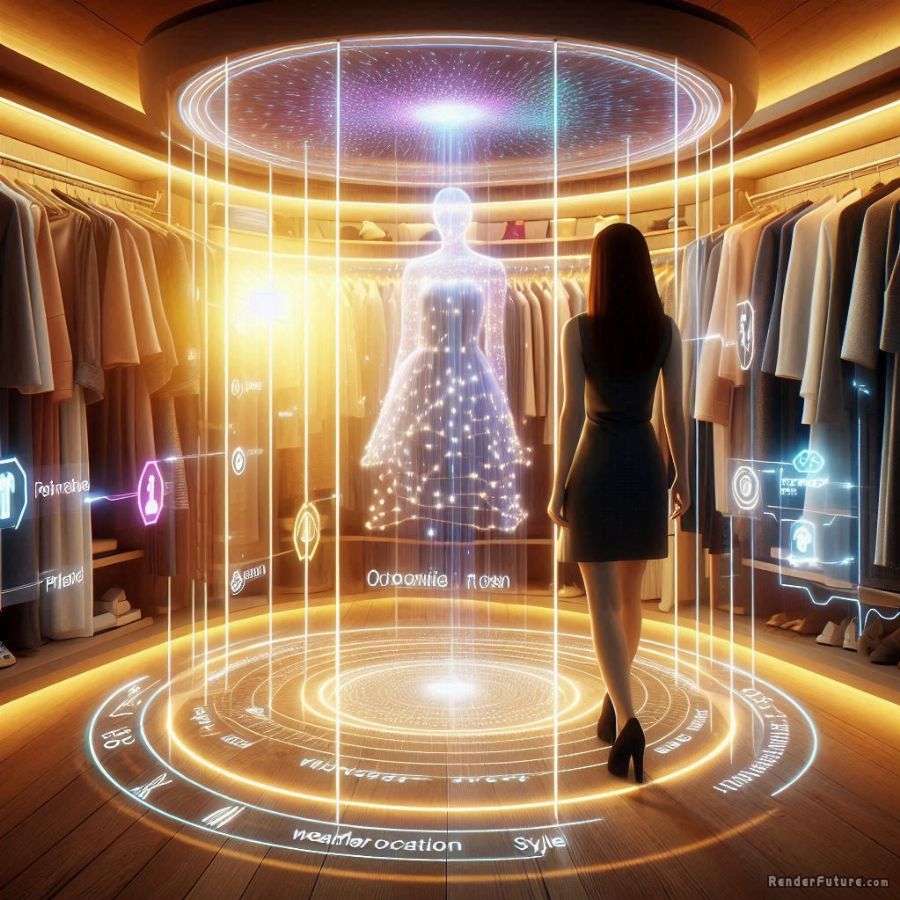 Advanced haptic feedback gloves and bodysuits will simulate textures, letting you feel the softness of cashmere or the stiffness of denim before buying. AI stylists, trained on your past purchases and body scans, will suggest cuts and colors tailored precisely to your taste. Want to see how a dress looks in emerald green instead of black? A voice command shifts the hue instantly.
Advanced haptic feedback gloves and bodysuits will simulate textures, letting you feel the softness of cashmere or the stiffness of denim before buying. AI stylists, trained on your past purchases and body scans, will suggest cuts and colors tailored precisely to your taste. Want to see how a dress looks in emerald green instead of black? A voice command shifts the hue instantly.
The End of Buyer’s Remorse
This isn’t just about convenience – it’s about eliminating waste. Millions of clothing items are returned yearly because they don’t fit or look as expected. Virtual try-ons could slash that number, reducing carbon emissions from shipping and excess production.
But here’s the philosophical dilemma: If digital fashion becomes indistinguishable from reality, will we still crave physical clothing? Some might embrace a fully virtual wardrobe, updating their look daily without ever buying fabric. Others will insist on the irreplaceable sensation of real textiles. The future may hold a hybrid model – where digital and physical fashion coexist, each serving different needs.
Bio-Engineered Fashion: Clothes That Know You
Lab-Grown Fabrics: The New Organic
Synthetic fabrics today are often uncomfortable, itchy, or environmentally toxic. The next generation of materials will be grown, not just manufactured – bio-fabricated from lab-engineered proteins, algae-based polymers, or even cultured collagen. These fabrics will mimic organic textures while being hypoallergenic and tailored to your biology.
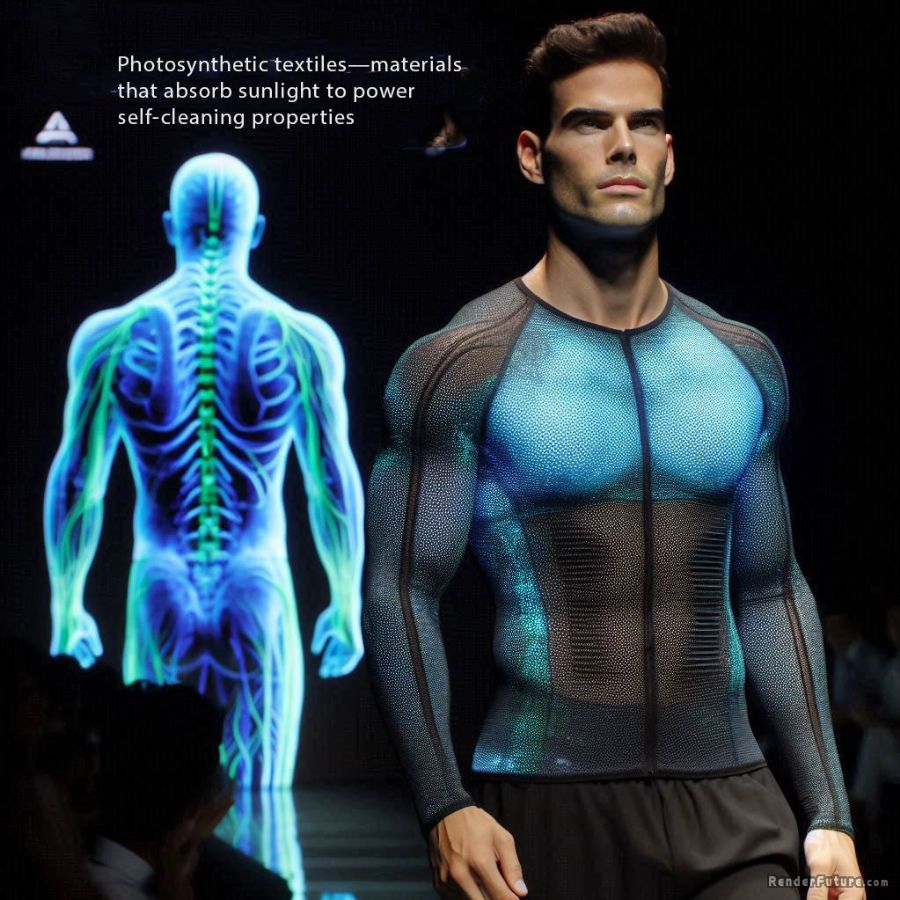 Picture a shirt woven from microbial cellulose – breathable like cotton but stronger than polyester, and completely biodegradable. Or athletic wear embedded with enzymes that break down sweat, eliminating odors without harsh chemicals. Some prototypes even explore photosynthetic textiles – materials that absorb sunlight to power self-cleaning properties.
Picture a shirt woven from microbial cellulose – breathable like cotton but stronger than polyester, and completely biodegradable. Or athletic wear embedded with enzymes that break down sweat, eliminating odors without harsh chemicals. Some prototypes even explore photosynthetic textiles – materials that absorb sunlight to power self-cleaning properties.
Your DNA’s Perfect Match
The most personal innovation? DNA-compatible fashion. Future clothing could be custom-grown to avoid triggering immune reactions, making synthetic allergies obsolete. Medical-grade fabrics might continuously monitor vital signs, detecting early signs of fever, dehydration, or muscle strain. Your outfit could alert you to health issues before you feel symptoms.
But with great power comes ethical questions. Who owns the data your clothes collect? Could corporations exploit biometric insights for advertising? Regulations will need to ensure wearable tech prioritizes privacy over profit.
The Future of Fashion Shows: AI-Generated Spectacles
Runways Beyond Reality
Creative directors’ debuts will no longer be confined to physical spaces. Imagine fashion shows where AI-generated sets – printed from 3D models – create immersive worlds limited only by imagination. A designer’s collection could debut in a floating glass palace one season, then a neon-lit cyberpunk metropolis the next.
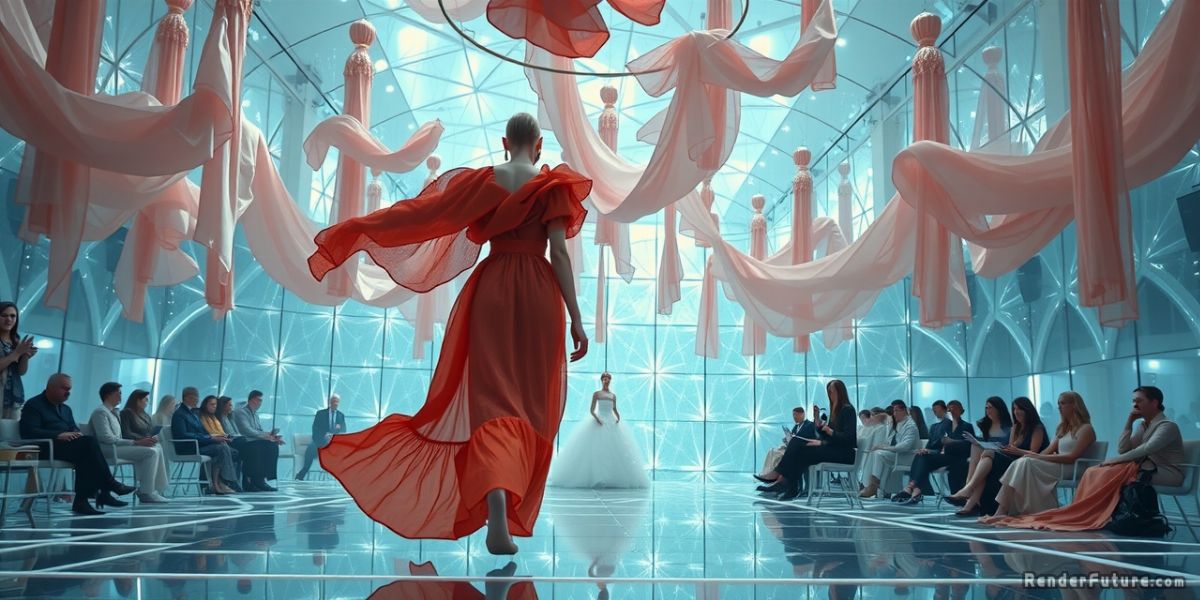 These events will be multi-sensory experiences, blending holographic projections with scent diffusion and haptic feedback. Attendees won’t just see the clothes – they’ll feel the texture of fabrics through wearable tech and even taste the ambiance with molecular gastronomy-inspired refreshments.
These events will be multi-sensory experiences, blending holographic projections with scent diffusion and haptic feedback. Attendees won’t just see the clothes – they’ll feel the texture of fabrics through wearable tech and even taste the ambiance with molecular gastronomy-inspired refreshments.
Democratizing Front Row Access
VR streaming will make front-row seats available to anyone with a headset. Fans worldwide could “sit” beside editors and celebrities, interacting with the show in real time. AI might even customize the viewing experience – zooming in on details you love or suggesting similar looks based on your preferences.
The Dark Side: Ethical and Psychological Dilemmas
Will AI Erase Human Creativity?
Not every consequence of this fashion revolution will be positive. If AI dictates trends and personalizes every outfit, will individuality suffer? Will we lose the joy of stumbling upon a unique vintage piece in a thrift store?
There’s also the risk of over-reliance on technology. If clothes repair themselves, will we forget basic mending skills? If virtual fashion dominates, could traditional craftsmanship disappear? And what happens when a hacker hijacks your self-adjusting jeans?
Solutions for a Balanced Future
- Human-AI collaboration: Designers should use AI as a tool, not a replacement for creativity.
- Data transparency: Wearable tech must prioritize user control over health metrics.
- Sustainable mindset: Even self-repairing clothes should be recyclable, not disposable.
A Hopeful Horizon: Fashion That Cares
 The future of fashion isn’t just smarter – it’s kinder. To us, and to the planet. With ultra-efficient manufacturing, self-adjusting longevity, and digital alternatives reducing waste, the industry could finally shed its reputation as a polluter.
The future of fashion isn’t just smarter – it’s kinder. To us, and to the planet. With ultra-efficient manufacturing, self-adjusting longevity, and digital alternatives reducing waste, the industry could finally shed its reputation as a polluter.
One day, we might look back at today’s throwaway culture and wonder how we ever tolerated it. The revolution isn’t coming – it’s already here.

References and Sources
- McKinsey & Company – “The State of Fashion 2023”
A comprehensive report on fashion industry trends, sustainability, and tech innovations.
https://www.mckinsey.com/industries/retail/our-insights/state-of-fashion - MIT Media Lab – “BioLogic: Living Nanostitches”
Research on self-adjusting fabrics and bio-engineered materials.
https://www.media.mit.edu/projects/biologic/overview/ - Wired – “The Future of Fashion Is Programmable”
Explores how AI and VR are reshaping retail and design.
https://www.wired.com/ - The Fabricant – “Digital Fashion Manifesto”
How blockchain and AI are creating a new fashion paradigm.
https://www.thefabricant.com - Vogue Business – “Why AI Fashion Design is Coming for Creativity”
Analysis on AI’s role in design democratization.
https://www.voguebusiness.com/










